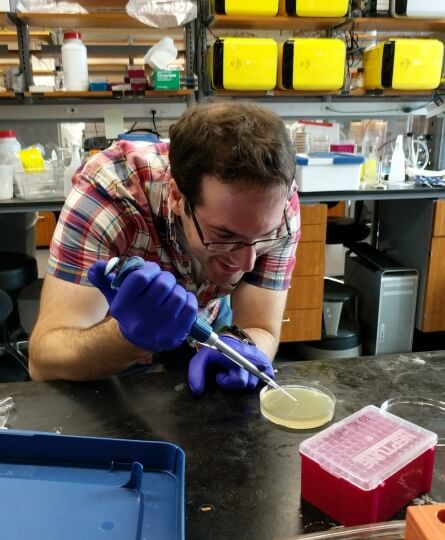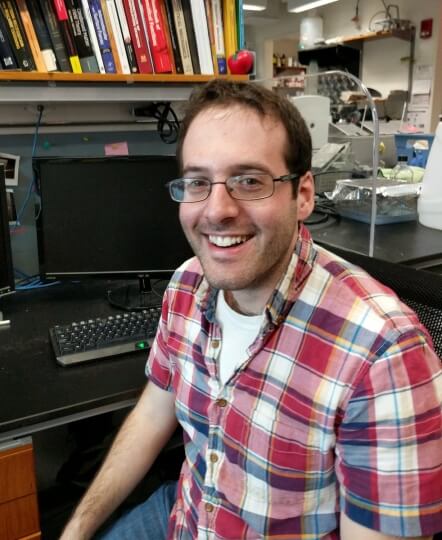Bryan Weinstein, Ph.D. ’18, can’t talk too much about what he does for a living. He works for The MITRE Corporation, which operates multiple federally funded research and development centers (FFRDCs) and works across government and in partnership with industry and academia to tackle challenges to the safety, stability, and well-being of our nation.
Bryan Weinstein studied soft-matter physics such as fluid mechanics and cellular growth while pursuing his Ph.D. at SEAS, and now applies those modeling and simulation skills at The MITRE Corporation. (Credit: Bryan Weinstein)
Most of his work as a lead modeling and simulation engineer and analyst is pretty hush-hush, although Weinstein said it often involves competition between the U.S. and other nations.
“I use modeling and simulation, similar to what I did during my Ph.D., to answer tough questions for the government,” he said. “They’ll tell me they’re interested in investing in something, and want to know what that can get them, and if it’s worth it. So I’ll code something up with the team to try to analyze, study, and answer that question.”
Weinstein arrived at the Harvard John A. Paulson School of Engineering and Applied Sciences (SEAS) already wanting to work for the government. He’d received a graduate fellowship from the U.S. Department of Energy (DoE) coming out of Case Western Reserve University, one of 50 out of 1,300 total applicants to do so, and in 2012 he joined David Nelson, Arthur K. Solomon Professor of Biophysics and Professor of Physics and Applied Physics.
“[Nelson’s] work is from more of a hardcore physics lens, and that ended up being a great fit for me,” Weinstein said. “If you poke it and it jiggles and flows, that’s what I was interested in. I did fluid mechanics, cellular growth, some models of evolution. You could think of it as spatial probability distributions evolving in time.”
Weinstein switched research topics while he was at Harvard, one of several pivots he’d end up making while pursuing a Ph.D. in engineering physics and applied physics, with a secondary degree in computational science and engineering. He completed a master’s degree in engineering physics and applied physics in 2014 and earned two other fellowships: the SEAS Pierce Fellowship in 2012, and an Institute for Applied Computational Science Fellowship in 2016.
Weinstein considered working for the Department of Energy after graduation, but instead pivoted to MITRE, where fellow SEAS graduate Edlyn Levine, Ph.D. ’16, was already working and recruited him.
Bryan Weinstein, Ph.D. ’18 (Credit: Bryan Weinstein)
“It’s about advancing the public good,” Weinstein said. “Every piece of code I write, every analysis I do, it’s in that vein. The fact that I can know going to work each day that I’m trying to advance the public interest makes it a place worth working at.”
Weinstein’s current work is a big pivot from the soft matter physics at the heart of much of his SEAS research. But many of the skills he developed at SEAS have translated directly into his current work.
“It turned out that the modeling that I do, it’s not physics, it’s not biology anymore, but it’s the same applied math concepts and ideas that were readily transferable,” he said. “Probabilistic distributions in space, those same sorts of questions can apply to national security problems.”
Weinstein has plenty of experience transferring skill sets from one field to another. He earned a DoE fellowship on one academic proposal, only to change it when he got to SEAS, then chose to reapply his training to an entirely new field when he picked MITRE over continuing to work for the DoE post-graduation.
His path might not be what he envisioned 10 years ago, but he can still look back at those early decisions as directly impacting where he is now.
“It’s not the Department of Energy, but it’s an FFRDC helping the government,” he said. “The Department of Energy taught me that could be a fulfilling career path.”
Press Contact
Matt Goisman | mgoisman@g.harvard.edu

